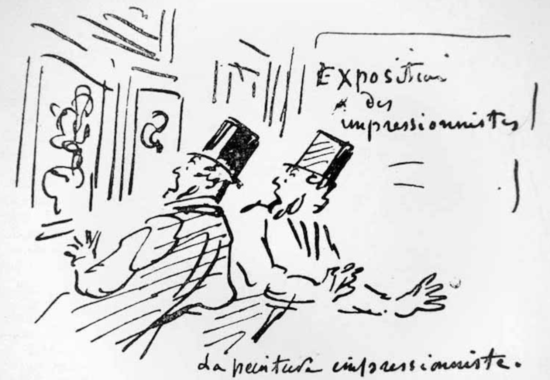
When I became a wine enthusiast, the standards for fine wine were set in just three places: Bordeaux, Burgundy, and Champagne. There wasn’t much French wine from other regions, or even much Italian wine, available in Boston well into the 1970’s.
This kind of entrenched loyalty to a narrow definition of quality may have many analogues, but the one I prefer is that of the Salon, France’s state-sponsored annual art exhibition, which for close to 200 years set and maintained standards for good taste in painting and sculpture not just for France, but for all of Europe and America, too.
In its view, what constituted fine art was a settled matter: Imitation, rather than innovation was what was wanted.
This cozy arrangement received the first of two disorienting jolts when, in 1863, a group of artists whose work had been rejected by the jury found an opportunity to stage an exhibition of their own. In this Salon des Refusés, a new artistic sensibility was on display. Among its exhibitors were a few names you might recognize: Gustav Courbet, Camille Pissarro, Édouard Manet.
The reaction of the critics and public was overwhelmingly incomprehending and dismissive. Ten years later, the first of a series of exhibitions aimed at giving Parisians their first look at what would become known as Impressionism was also widely panned. The cartoon at the top of the page from a newspaper of the day catches the public reaction nicely.
By its rejection of these investigations into what fresh possibilities might exist for painting, the Salon pretty much guaranteed that the genetic material out of which modern art evolved would be drawn from the refusé pool, rather than from the establishment. But isn’t it always like this?
It’s hard to know just when and how the tide turned in favor of art’s 19th century avant garde, but we can be sure that one very important element would have been its promotion by a handful of critics who decided to actually do their job and exercise their critical faculties.
This required acknowledging that the old criteria in which they had been trained were inadequate to deal with what they were now looking at, and that current standards of judgment desperately needed resetting. Just what, in this Brave New World of art, constituted quality — and how could we know it when we saw it?
I don’t think it’s overstating the case to say that the world of wine now finds itself at a similar pass. A new generation of vintners are busy exploring the possibilities of natural winemaking and ransacking off-the-beaten-path regions for localized, traditional techniques and overlooked varietals. There’s an anything-goes feeling out there right now.
Add to this this the very significant changes sure to be coming our way due to climate change, and we may be witnessing the beginnings of a revolution in winemaking and wine consumption that will ‘ere long confront and dislodge our own cherished, long-held notions of what wine can and should be.
This will call for both critics and consumers to be at the top of their game, putting their critical faculties into gear while remaining open to engagement with whatever’s ahead.
And, yes, you can expect things to get a little bumpy